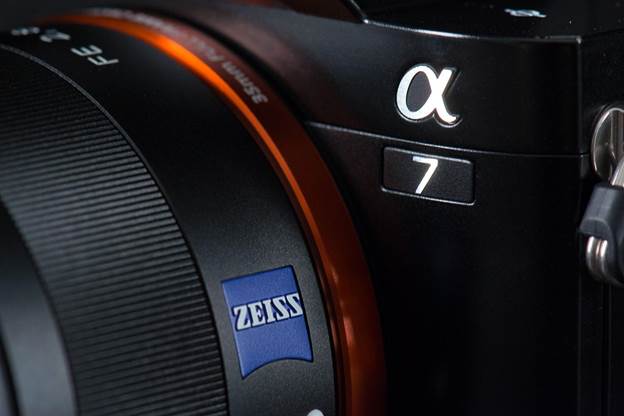Sony entered the imaging space after the acquisition of the Minolta
D-SLR manufacturing line in 2006. Initially, the D-SLRs on offer were largely
based on Minolta designs. Very soon, Sony realized that it was proving to be
extremely difficult and costly to break the duopoly of Canon and Nikon in the
D-SLR field. Sony, therefore, decided to enter the field of mirrorless
cameras that had been pioneered by Panasonic. The NEX-series was launched
amidst mixed reviews worldwide. Sony opted for the APS-C size sensor and one of
the major criticisms of the NEX-series was that whereas the body size had been
reduced, the lenses tended to be bulbous and therefore the package as a whole
did not gel.

The a7 uses a 24.3 megapixel CMOS sensor with a
low-pass filter and on-chip phase detection.
Meanwhile, the world market was slowly thawing in favor of mirrorless cameras. Models from the likes of Olympus,
Panasonic, Fujifilm and Samsung were being well received and according to some,
the days of D-SLRs were numbered. Sony has now taken the first daring step of
putting a full-frame CMOS sensor in a mirrorless
camera. The models introduced are called the Sony Α 7 and 7R, the R standing
for the fact that there is no anti-aliasing filter. With the Α 7, Sony has
started an entirely new system with a new mount called the E-mount. Only Sony’s
new FE lenses can take advantage of the full-frame sensor. Other lenses can be
used with an adapter. Does the new Α 7 deliver? SP had
the camera on its test bench, so read on for our detailed report.
Design and Build Quality
As far as design goes, the Α 7 is just about OK. It does not have, for
instance, the retro charm and perfect balance of the Olympus OM-D EM-1. The
body is made from metal alloy, the top cover from magnesium alloy and the rest
from polycarbonate. Both weather and dust sealing is provided. At 416g for the
body only, the Α 7 is on the lighter side.

Both the a7 and a7R can record video at 1080/60p and
24p, with manual exposure control, headphone and mic
ports, an audio meter, zebra pattern, XLR support, and live, uncompressed HDMI
output
Key Features
The full-frame Α 7 comes with a 24.3 million effective pixel CMOS
sensor. The 7R has a 36.4 million pixel sensor. The camera is filled with all
the features that one would find in a typical enthusiast D-SLR. The Bionz X processor in the 7 is claimed to be three times
faster than the previous Bionz system and allows the
camera to have a sensitivity range of ISO 50 to ISO 25600. The Α 7 can fire
away at a maximum 5 fps (focus and exposure are locked on the first frame) or
at 2.5 fps if focus and exposure are to be adjusted between shots. The camera
can shoot in RAW or JPEG or both simultaneously.

The a7 is also capable of electronic first curtain
mode, which allows for a quieter shutter,
and reduces the potential for 'shutter shock' vibration; this is absent from
the A7R
Shutter speeds vary from 30 sec. to 1/8000 sec. A variety of metering
options are available, viz Sony’s 1200 zone
evaluative metering, centre weighted metering and
spot. Both exposure compensation and White Balance bracketing are also
available. The 3” LCD sports 921,600 dots and can be tilted forwards or backwards.
It however, does not swivel. Sony has adopted a hybrid AP system with 25
Contrast-detection and 117 Phase-detection points. Autofocus points can be
selected manually as well. The camera can accept SD/ SDHC/SDXC cards, shoot in
high definition video (AVC HD or MP4) and has a depth of field preview as also
diopter adjustment. Full HD video recording is available. There is no built in
flash.